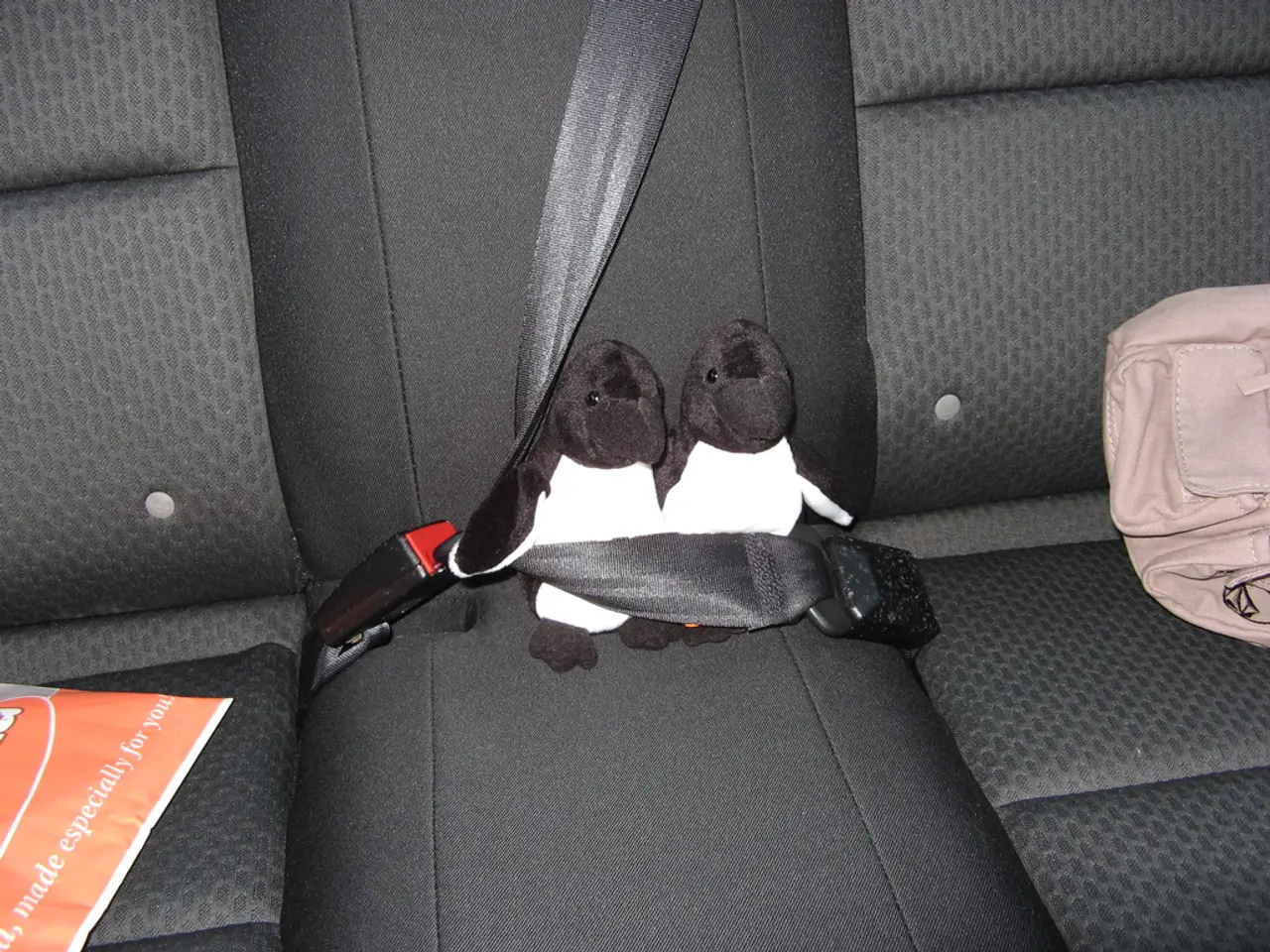Germany's guidelines for automobile safety seats for minors
In Germany, child car seats must comply with one of two main European safety standards: ECE R44/04 or the newer ECE R129 (i-Size). These regulations ensure seats are safe and appropriate for children either by weight (R44) or height (R129). Child seats are mandatory for children under 150 cm tall or younger than 12 years old, whichever comes first[1][3].
Key points of these standards are:
- ECE R44/04: An older standard based on child weight categories (Group 0, 1, 2, 3), gradually being phased out. Seats compliant with R44 will have an orange label with the regulation number.
- ECE R129 (i-Size): The newer standard uses child height for classification and mandates side impact protection and ISOFIX installation. i-Size infant seats require rear-facing travel until 15 months. Seats compliant with R129 carry an orange label and must use ISOFIX connectors, which align with standardized vehicle anchors[1][2].
Identifying compliant seats when buying new or second-hand:
- Look for the orange ECE approval label on the seat that explicitly shows either "ECE R44/04" or "ECE R129" compliance.
- For R44, the label includes weight categories the seat is suitable for.
- For R129, check for height ranges and ISOFIX compatibility.
- For second-hand seats, ensure the seat:
- Has this valid certification label.
- Has not been involved in any accidents.
- Shows no visible damage or excessive wear.
- Has all its original parts and instruction manuals.
- Be aware that R44 seats are being phased out and less commonly sold new. The safest and most current choice is an R129 (i-Size) seat.
- Verify with local regulations or vehicle manuals that the seat’s ISOFIX anchors or seatbelt installation matches your car.
- Confirm no relevant recalls or safety issues with the seat model.
When traveling in a taxi, parents or guardians are responsible for providing the child seat. Taxi drivers are not required by law to provide or install child seats. Seats with ISOFIX connectors are recommended for easier and more secure installation.
In carsharing vehicles, the driver is responsible for providing and correctly installing the child seat. For more advice, see the ADAC's child seat guide[4]. In Germany, children are required to use an appropriate child seat until they are 12 years old or reach a height of 150 cm. The law applies to all vehicles where seat belts are fitted.
Experts recommend keeping children rear-facing for as long as possible, ideally until 15 months or later. Failing to provide an appropriate child seat in a taxi can lead to fines for the parent(s) or guardian. Drivers and adults responsible for children can be hit with points on their driving licences and fines starting from €60 if they fail to use the appropriate seat[2]. Using the correct seat is essential not just for safety but to avoid penalties.
[1] German Federal Ministry of Transport and Digital Infrastructure [2] ADAC [3] Stiftung Warentest [4] ADAC Child Seat Guide
- To ensure the safety and wellness of children during travel, it's crucial to check the compliance of child car seats with either the ECE R44/04 or the ECE R129 (i-Size) standard, particularly when buying new or second-hand seats.
- When prioritizing health-and-wellness and safety for children, opt for the newer ECE R129 (i-Size) seat, as R44 seats are being phased out and less commonly sold new. This will provide side impact protection, height classification, and ISOFIX installation, which are key features not available in the older R44 standard.




